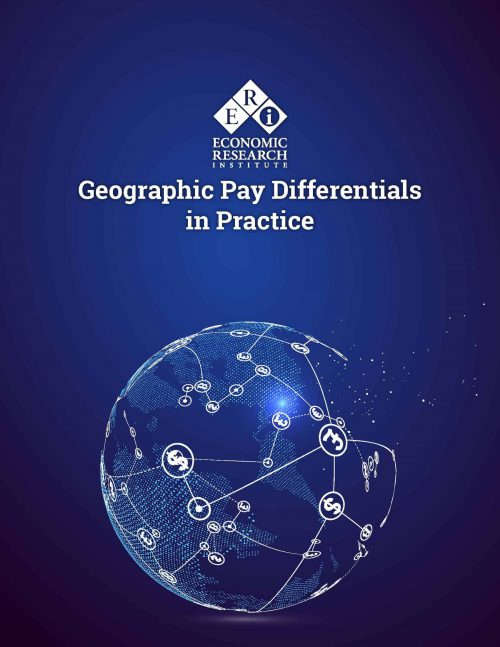New Geographic Assessor users are often surprised to find that geographic pay differentials are not constant across salary levels. This post is a compilation of a few questions that are often posed on this topic and includes some specific practical advice in the answers.
Sometimes analysts are looking for a single number to describe the labor cost differential between two locations. So, the first question is simply, “Why do the differentials vary by salary level?”
When the original research was done for the Geographic Assessor by ERI’s founder over 30 years ago, it was quickly determined that there was more than one labor market operating in geographic locations. This occurs for several reasons, with a major reason being that supply and demand for labor can vary at different salary levels. For example, we may observe a surplus in labor in lower-paid jobs, and that surplus cannot be used to directly fill demand in professional or management-level positions.
There could be a large difference in supply and demand in these various structures in a location due to driving economic factors. Since labor is not interchangeable in these structures, it creates separate labor markets that can be subject to different levels of supply and demand, resulting in various pay differentials at distinct salary levels, even in the same geographic location.
The original analysis for the Geographic Assessor was run using nonexempt, exempt and management-level salary structures separately, and the results were seamlessly connected. Even within the structures, patterns were observed indicating that the pay differentials varied by salary level and not simply by overall salary structure. The Geographic Assessor was built so that users could identify and use this additional information by inputting both locations and salary level(s) to obtain a relevant, precise salary differential. Over time, this approach has been used to capture various specific situations, such as increasing local minimum wages that can affect one end of the salary range but have no impact on the other end.
As we collect and process additional new data, we have increased the underlying structures from three to eight by further segmenting each of the original structures. However, these details work predominately behind the scenes; the Geographic Assessor still operates by inputting the locations and salary level(s) of interest to report the corresponding pay differentials by location.
Given that pay differentials vary by salary level, one follow-up question is, “What is the best salary level to use?”
The Geographic Assessor takes the approach that, since each planning situation may be different, there is no single “one size fits all” answer to this question. Part of the tool’s flexibility is its ability to provide salary differentials across a wide range of salaries, rather than ERI researchers determining a single level that is best for all situations.
There are some strategies that can help answer this question for specific situations. If you are not using a geographic salary structure and just want a single percentage for each location, then using the average salary for the base location is a good starting point. For example, using the United States average as the base location, the average salary in the US is currently around $50,000. That is a reasonable starting point for that analysis.
If you are working on a specific structure, then another approach might be to look at a salary toward the middle of the range in that structure. This minimizes the “distance” between the chosen salary and all the other salaries in the range. Some companies only have relatively high salaries in their structure, so the program gives them the ability to focus on a higher salary level than that of a company with only lower-paid positions in the structure. If the structure is broad, then a more complex approach might be to measure differentials at more than one salary point and perhaps combine them, weighting if appropriate.
A final question discussed here is, “What location should be used as the base location?”
If you are adjusting a structure to various destinations or are adjusting for remote worker pay, then it is relevant to consider the location used to build the base structure itself. Often, this is either the headquarters location or the US average, depending on the source data of the original structure. So, matching the location of the source data can help identify a starting point for the base location. The differentials are always relative to the base location, so this is an important factor in the analysis.
One final point is that companies often repeat the analysis to be able to capture movement in the labor markets over time since labor markets are not static and do fluctuate. If the results can vary at a single point in time just by changing the salary level (as described in the first question) or using a different base location as the benchmark (as described in the last question), then it often makes sense to keep these factors constant overtime to limit movement in the differentials to local labor cost changes.
Careful consideration of these factors at the outset is a good idea. This is not always possible when users inherit analyses from predecessors who may not have clearly documented the original logic of why these choices were made. In this case, it is useful to understand the implications of changing them, even if the original rationale is no longer available.
Clearly, these are brief answers to questions that, in practice, can end up being quite complex. While ERI does not provide any consulting services, we are a source of information – both in terms of data and data-driven tools, but also general guidance on questions like these. In addition to geographic differential data collection and research, we conduct surveys on how companies implement geographic differentials in practice. If you need additional information on any of the topics introduced here, please contact us.



